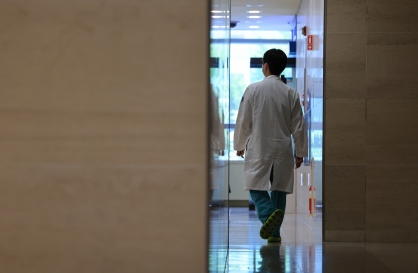Dutch scientists have developed the world’s smallest autonomous flapping drone, a dragonfly-like beast with 3-D vision that could revolutionize our experience of everything from pop concerts to farming.
“This is the DelFly Explorer, the world’s smallest drone with flapping wings that’s able to fly around by itself and avoid obstacles,” its proud developer Guido de Croon of the Delft Technical University told AFP.
Weighing just 20 grams, around the same as four sheets of printer paper, the robot dragonfly could be used in situations where much heavier quadcopters with spinning blades would be hazardous, such as flying over the audience to film a concert or sport event.
The Explorer looks like a large dragonfly or grasshopper as it flitters about the room, using two tiny low-resolution video cameras ― reproducing the 3-D vision of human eyes ― and an on-board computer to take in its surroundings and avoid crashing into things.
And like an insect, the drone which has a wingspan of 28 centimeters, would feel at home flying around plants.
“It can for instance also be used to fly around and detect ripe fruit in greenhouses,” De Croon said, with an eye on the Netherlands’ vast indoor fruit-growing business.
“Or imagine, for the first time there could be an autonomous flying fairy in a theme park,” he said.
Unlike other drones that use rotor blades and can weigh hundreds of times as much, the Explorer has two wings on each side that flap rapidly to create lift.
“We got our inspiration from real small insects,” De Croon said.
While smaller “flapping” drones exist, such as the RoboBee developed by students at Harvard University in the United States, they are tethered for power, control and processing, and thus far from autonomous.
The Explorer has its own small lithium polymer battery that allows it to fly for around nine minutes, while it “sees” with its onboard processor and a specially developed algorithm to make instant decisions.
It has wireless analog video, gyroscopes and a barometer to calculate its height.
Different algorithms would allow it to perform different tasks, and because it is autonomous it could be sent into enclosed spaces such as concrete buildings or mine shafts, where radio control would be impossible, to search for casualties or hazards. “The DelFly knows precisely where obstacles are located,” said De Croon as the aircraft, built from composite materials including carbon fiber, fluttered towards a wall during a demonstration flight before veering elegantly away in search of another route.
The idea of building a flapping-winged drone began around nine years ago when a group of students at Delft Technical University’s prestigious aerospace faculty first designed the DelFly I. Over the next few years, research continued and the machine became smaller and smaller, said Sjoerd Tijmons, 28, who helped write the algorithm for the latest DelFly Explorer’s “brain.” (AFP)





![[Graphic News] More Koreans say they plan long-distance trips this year](http://res.heraldm.com/phpwas/restmb_idxmake.php?idx=644&simg=/content/image/2024/04/17/20240417050828_0.gif)
![[KH Explains] Hyundai's full hybrid edge to pay off amid slow transition to pure EVs](http://res.heraldm.com/phpwas/restmb_idxmake.php?idx=644&simg=/content/image/2024/04/18/20240418050645_0.jpg)
